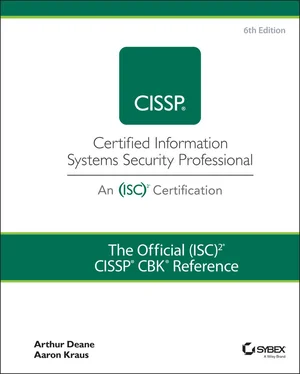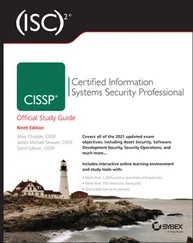Usability refers to the ability of a user to meet their needs with available data. If you have ever needed to edit a Google doc (or any other file) and noticed that you have been granted only read-only permissions, then that file was absolutely available but lacked sufficient usability.
Timeliness refers to the time expectation for availability of information and resources and is the measure of the time between when information is expected and when it is available for use. Ensuring timeliness requires that data is available to authorized users within an acceptable period of time. For cloud services and other situations that involve a third party managing data, timeliness is a key factor that must be agreed upon and documented in service level agreements (SLAs).
There are many threats to data and system availability, and they may be either malicious or nonmalicious, either man-made or naturally occurring. Malicious availability threats include denial-of-service (DoS) attacks, object deletion, and ransomware attacks. While malicious compromise of availability tends to get all the buzz, there are various nonmalicious threats that can interfere with resource and data availability. Some common examples include hardware failures, software errors, and environmental threats such as power outages, floods, excessive heat, and so forth. When planning your information security program, it's essential that you thoroughly consider both human-based and naturally occurring threats and develop mitigations that address all threat vectors.
Mechanisms such as data backups, redundant storage, backup power supply, and web application firewalls (WAFs) can help prevent disruption of system and information availability. For systems that have a requirement for high availability and continuous uptime, cloud computing offers added redundancy and extra assurance of availability.
Limitations of the CIA Triad
The CIA Triad evolved out of theoretical work done in the mid-1960s. Precisely because of its simplicity, the rise of distributed systems and a vast number of new applications for new technology has caused researchers and security practitioners to extend the triad's coverage.
Guaranteeing the identities of parties involved in communications is essential to confidentiality. The CIA Triad does not directly address the issues of authenticity and nonrepudiation, but the point of nonrepudiation is that neither party can deny that they participated in the communication. This extension of the triad uniquely addresses aspects of confidentiality and integrity that were never considered in the early theoretical work.
The National Institute of Standards and Technology (NIST) Special Publication 800-33, “Underlying Technical Models for Information Technology Security,” included the CIA Triad as three of its five security objectives, but added the concepts of accountability (that actions of an entity may be traced uniquely to that entity) and assurance (the basis for confidence that the security measures, both technical and operational, work as intended to protect the system and the information it processes). The NIST work remains influential as an effort to codify best-practice approaches to systems security.
Perhaps the most widely accepted extension to the CIA Triad was proposed by information security pioneer Donn B. Parker. In extending the triad, Parker incorporated three additional concepts into the model, arguing that these concepts were both atomic (could not be further broken down conceptually) and nonoverlapping. This framework has come to be known as the Parkerian Hexad. The Parkerian Hexad contains the following concepts:
Confidentiality: The limits on who has access to information
Integrity: Whether the information is in its intended state
Availability: Whether the information can be accessed in a timely manner
Authenticity: The proper attribution of the person who created the information
Utility: The usefulness of the information
Possession or control: The physical state where the information is maintained
Subsequent academic work produced dozens of other information security models, all aimed at the same fundamental issue — how to characterize information security risks.
In addition to security topics codified in the CIA Triad and related models, the concept of privacy has grown to be a core consideration of security professionals. Privacy , as defined in the (ISC) 2glossary, is the right of human individuals to control the distribution of information about themselves. Privacy, though often managed outside of organizations' central security team, is closely related to the principle of confidentiality and must be a priority for every organization that handles employee or customer personal information. We discuss privacy in several sections throughout the rest of this book.
For the security professional, a solid understanding of the CIA Triad is essential when communicating about information security practice, but it's important to consider related topics not covered by the triad.
EVALUATE AND APPLY SECURITY GOVERNANCE PRINCIPLES
Security governance is the set of responsibilities, policies, and procedures related to defining, managing, and overseeing security practices at an organization. Security is often mistakenly considered to be an IT issue; in actuality, securing an organization's assets and data is a business issue and requires a high level of planning and oversight by people throughout the entire organization, not just the IT department. Because security is a wide-ranging business issue, security governance commonly overlaps with corporate governance and IT governance for an organization. As such, security governance is typically led by executive management at a company, usually including the board of directors. Applying security governance principles involves the following:
Aligning the organization's security function to the company's business strategy, goals, mission, and objectives
Defining and managing organizational processes that require security involvement or oversight (e.g., acquisitions, divestitures, and governance committees)
Developing security roles and responsibilities throughout the organization
Identifying one or more security control frameworks to align your organization with
Conducting due diligence and due care activities on an ongoing basis
Alignment of the Security Function to Business Strategy, Goals, Mission, and Objectives
An effective security function must be in alignment with the company's business strategy, goals, mission, and business objectives. Each of these elements should be considered during the creation and management of the organization's information security program and policies.
Companies that fail to properly align their security program with their business strategy, goals, mission, and objectives often perceive security as a business blocker; these companies frequently experience information security as a hurdle that must be cleared to get things accomplished. On the contrary, an information security function that is tightly aligned with a company's strategy and mission can serve as a business enabler, where security is built into the fabric of the company and helps drive toward common goals and objectives. In other words, a company should achieve its mission thanks in part to security, not despite security.
A mission statement is a simple declaration that defines a company's function and purpose; a mission statement summarizes what the company is, what it does, and why the company exists to do those things. A mission statement should be used to drive all corporate activities, including the organization's allocation of time, finances, and effort.
Читать дальше












